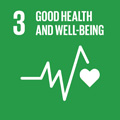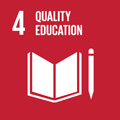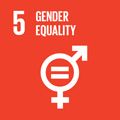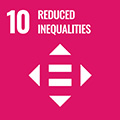- Docente: Roberto Impicciatore
- Credits: 9
- SSD: SECS-S/04
- Language: Italian
- Teaching Mode: Traditional lectures
- Campus: Bologna
- Corso: First cycle degree programme (L) in International Development and Cooperation (cod. 8890)
Learning outcomes
The course aims to develop the understanding of population dynamics and the relationships between individual demographic behaviours and contextual factors. It starts from the long-term analysis of the world’s population and the links between demographic and socio-economic factors in human history, in order to come up with current issues of topical interest. On the one hand, global concerns such as international migration, inequality, social policies and sustainable development are tackled, on the other hand the course addresses the recent trends that characterize the European and the Italian population such as aging, very low fertility, delay in the transition to adulthood and the spread of new forms of union. The approach used seeks to highlight the interdisciplinary character of demographic research and to develop skills in quantitative analysis.
At the end of the course, the student will be able to:
- critically evaluate the demographic trends by inserting them within a suitable socio-demographic theory;
- assess and apply the main demographic measures and population development indicators;
- apply the appropriate quantitative research strategy for the analysis of data coming from the major demographic and social surveys at international level.
Course contents
Program
The course aims to develop the understanding of population dynamics and the relationships between individual demographic behaviours and contextual factors. It starts from the long-term analysis of the world’s population and the links between demographic and socio-economic factors in human history, in order to come up with current issues of topical interest. On the one hand, global concerns such as international migration, inequality, social policies and sustainable development are tackled, on the other hand the course addresses the recent trends that characterize the European and the Italian population such as aging, very low fertility, delay in the transition to adulthood and the spread of new forms of union. The approach used seeks to highlight the interdisciplinary character of demographic research and to develop skills in quantitative analysis.
Overall, at the end of the course, students will be able to:
- critically evaluate the demographic trends by inserting them within a suitable socio-demographic theory;
- assess and apply the main demographic measures and population development indicators;
- apply the appropriate quantitative research strategy for the analysis of data coming from the major demographic and social surveys at international level.
Contents
The long-term evolution of the world’s population. The major epidemics and demographic mechanisms of adaptation and self-regulation. Demographic growth and economic development. The demographic transition. Recent demographic trends in Europe and Italy (low fertility, mortality, aging). Reproductive choices and welfare system. Family-work conciliation in Italy. Young people, the delayed transition to adulthood, and family ties.
The sources of Demography. Population growth measures. Elements of Demographic Analysis (age, structure, Lexis diagram, rates and probabilities, fertility and reproductive measures). Life tables and survival analysis. Population projections.
International migration in a global perspective. Theories explaining human mobility. The Italian and Mediterranean framework.
Readings/Bibliography
- Online materials provided by the lecturer during the course. See https://elearning-cds.unibo.it
- M. Livi Bacci Storia minima della popolazione del mondo. Il Mulino (also available in English: A concise history of world population. Wiley-Blackwell)
- A. Rosina and A. De Rose. Demografia. Egea.
- G. De Santis. Demografia. Il Mulino. 2010. Chapters: 1 (all), 2 (sections 1-7), 3 (all), 4 (all), 5 (sections 1-4), 6 (sections 1-6), 8 (sections 1,2), 9 (sections 1,2), 10 (all), 11(all)).
Teaching methods
Lessons,seminars, exercises using Excel software.
Assessment methods
Attending students
written test + computer test
Non-attending students
written test
Teaching tools
Online materials (slides, papers, exercises, etc.) on the E-learning website.
Use of computing equipment for processing spreadsheets.
Office hours
See the website of Roberto Impicciatore
SDGs




This teaching activity contributes to the achievement of the Sustainable Development Goals of the UN 2030 Agenda.
